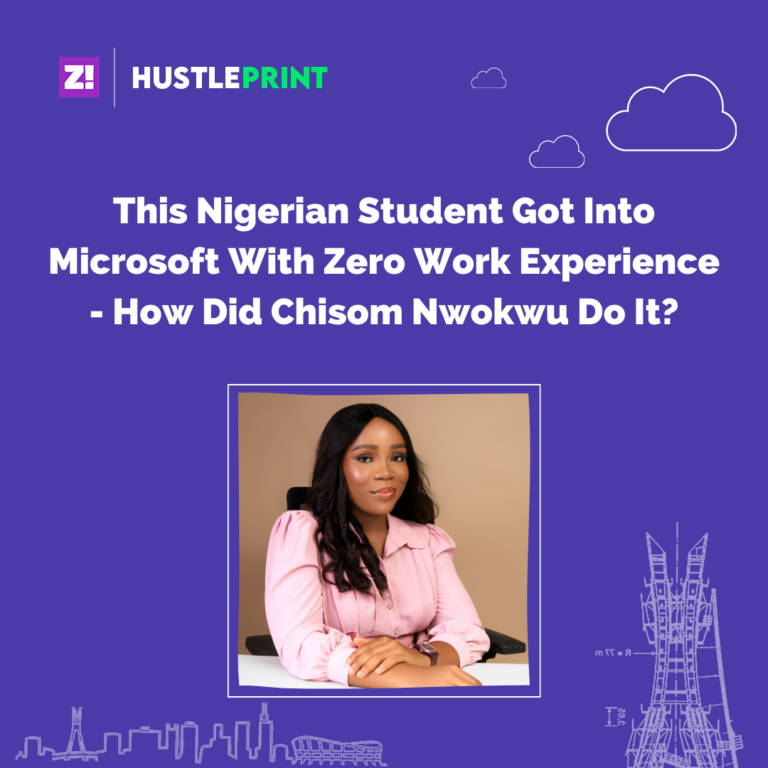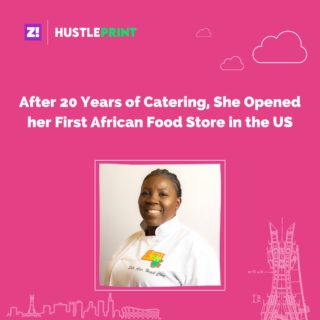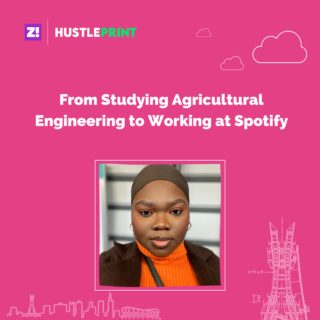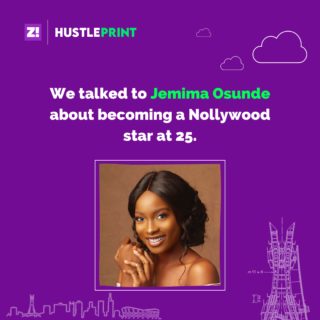If you could pick one thing to do for the next 10 years, what would it be? That one dream. Many of us don’t dream of labour. But for Owo Anietie, his 10-year-old self was sure it was art.
His dream started with selling one drawing to school friends for ₦30. 17 years later, Owo Anietie donated $500K+ worth of Ethereum (ETH) to build a free art and dance academy in Ikorodu. My one question: How?
As told to Steffi O.
In the beginning, was the art
Things like maths never made sense to me. Two plus two equals four. Well, why can’t it be ten? When I asked my maths teacher this, he’d laugh. I felt stupid.
In Primary 4, art showed up. It was something I could connect to. It was realistic. It was about self-expression, and I didn’t need to question that.
I started drawing to pull out the stories I heard at home into something I could touch. I grew up in a large compound in Uyo, and most nights ended with stories. Sometimes, they were folktales about the tortoise and the bird or war stories. I soaked up everything. At school, I’d tear out pages from my book to draw anything I could picture. My classmates hailing me was all the validation I needed. I felt like I was really good.
My first sale, learning from mentors and a new love
I can’t remember most of what I drew, but when I was 10, the first significant thing I sold was a drawing of naira notes. I placed them on paper and traced out ₦10, ₦20 and ₦100 notes. By the time I coloured them in, they looked real. Real enough for my classmates to pay me ₦30 and attempt to use the drawing to buy suya. They weren’t successful, but I wasn’t giving them back that ₦30.
I didn’t take art seriously until I was 14. I was in SS 1, and we’d finally gotten an art teacher, who taught me about Nigerian art history like the Nok Terracotta in Benin. After that, I learnt how to use colours and create vivid paintings from two other art teachers. I think of them as mentors. Each phase of mentorship in secondary school founded what my skills eventually became.
Discovering animation and getting into side hustles
As my art progressed, I wanted to try new things. I was intrigued by science and wanted to understand things like gravity, how the earth was made, and the history of mankind. Documentaries like The Story of Us with Morgan Freeman answered some of those questions. Physics classes helped with the rest. I was also curious about how to merge science with art. Science-fiction cartoons became interesting. I was watching shows like Avatar, and it felt like the animators created a whole new universe. I wondered if I could do the same with art — animation was a fairly new concept to me.
Dominik Umoren was my last mentor. He taught me the closest thing to graphics design in 2012: screenprinting. It involved using a stencil to draw designs on banners and t-shirts. The process was stressful, but I was making money as a 17-year-old artist, so I had no complaints. In exchange for the lessons, I helped out with jobs and errands.
On one of my errands, I saw a poster advertising animation classes. It took me back to watching Avatar. There was a number on the poster, so I called. I met up with the guy, and he was hyped about making a movie together. We talked for hours. But it ended like that. Our first link-up was the last time I ever saw him. After that, I put the pipe dream of animation in my back pocket.
I needed to plan for uni. I didn’t trust that I could earn enough with art, so I studied building technology as a good backup plan. If art ever flopped, I’d dust my certificate and move. I kept up with art as a side hustle.
My first major break on Facebook
I’d been designing banners and t-shirts for four years. I posted my designs on Facebook to get clients, and in 2013 I got lucky. An author from Lagos messaged me. She needed digital illustrations for a book. I had zero experience, but why would I turn down ₦50k? I took the job.
I spent one month figuring out how to design with my laptop. I used a mouse to design 46 illustrations. It was the most difficult thing I’d ever done, but it was the starting point of the career that led me to NFTs.
The first thing that influenced my trajectory was ASUU. After my first paid illustration in 2013, I kept freelancing as a graphic designer while schooling. It was stressful, but my consolation was graduating in five years. LOL.
ASUU had other plans. In 2018, ASUU went on strike. I can’t remember how many strikes had happened before then, but I was over ASUU’s stress. The same year, I decided to move to Lagos.
Life on the real streets
Before I moved to Lagos, I got a job offer from Anakle. They reached out to me on Twitter, but I couldn’t take their offer because of school. This time, nothing was holding me back. The salary wasn’t great, but it was better than dealing with ASUU’s unending strike.
While I worked at Anakle, I was catching flights back to Uyo for my final year project. ASUU had finally called off the strike in early 2019, but I wasn’t quitting my job. Shuttling back and forth for a year was tough. But my consolation was finally being able to work as a motion graphic designer. I finally collected the degree in 2020.
The beginning of NFTs
At the peak of the pandemic, international artists talked a lot more about NFTs, using the term “crypto art”. It meant I could add my artwork to a platform that made it impossible for anyone to steal it and earn crypto in exchange for each sale. I was hooked.
Twitter was filled with conversations about artists earning thousands of dollars from crypto art, but I noticed something: all the people talking about NFTs in 2020 were American. “Where are the Africans?” I thought.
I put out a tweet asking why Africans weren’t getting in on crypto art, and it was crickets. No comments or retweets.
I began to think of ways we could also benefit from crypto art. I had no clue about Osinachi or Lethabo Huma who’d been into NFTs since 2019. It seemed like a dead conversation for African artists. So I spent the rest of 2020 researching.
My first NFT sale: A mix of the past and present
In 2020, I spent time studying Benin art. I was obsessed with details like the Benin Ivory mask the Oba wore during special ceremonies. The mask was looted around the same period India experienced the bubonic plague in 1897. The plague didn’t get to Africa, but it was interesting to see similar timelines. I wanted to create a version of what the Benin mask would look like during the pandemic. That was the birth of Masked; a merge of the past and present.
I put Masked up and asked my colleagues at Anakle to share it with as many people as possible. I told my guy I was ready to quit my job if I sold the mask, which was a joke but also wasn’t a joke. 24 hours later, Masked sold for 0.5 ETH (approximately $600). I was stoked. The collector mentioned that he had been following me for years and was waiting for me to get on the NFT space. Beyond the money, that was my sign to keep going.
My next sale was another rendition of Benin art — the Seeker
RELATED: I Had to Bet on Myself and Make It Work — Man Like Anthony Azekwoh
Journeying to the future of art
Before September, I’d played around with the concept of futuristic African art — 3045 to be precise. I called the idea Afrodroids. When I shared the first piece in April, I expected it to sell fast. Three months later, I didn’t get a buyer. I felt bad. I thought people would be fascinated by the idea of re-imagining African stories in the future. Clearly, they weren’t. I shelved the project.
While I was rethinking the strategy for Afrodroids, people reached out to me to work on Profile Pictures (PFP) projects. These were projects that I would work with other artists to launch. Other projects like CrytoPunks and Bored Ape Yatch had been doing well, and NFT enthusiasts were keen on connecting to start their own projects too. I wasn’t interested, so I never looked into it. I preferred working on one-on-one art — limited individual pieces. I liked the idea of creating only originals.
I finally listened to an offer when I understood the value of multiple people owning a piece of African art. There’d be more exposure to African stories, but the guy was asking for a large percentage of the profits. It didn’t make sense to say yes. I could easily make the same money myself, so I shunned the offer.
A few weeks after, I reached out to my guys to start our own version of PFP with Afrodroids. The first Afrodroid took a while to sell, but I trusted that people would see the vision. I just knew it would sell out.
Building 12,000 art pieces in three weeks
I was riding on the fact that nothing like Afrodroids existed in Africa. In a few days, I built a solid team. They were artists experienced with designing characters for PFPs. I had friends in Australia, Hong Kong, the USA and London working with me tirelessly. We started in August and aimed to launch in three weeks.
We needed people to believe 3045 was real. To prepare, I consumed materials on culture and technology. First, I studied the origin stories of Africans. Things like the emergence of Oduduwa in Yoruba culture, the start of the Ashanti tribe in Ghana, ancient female warriors of Dahomey. I wanted the art pieces to look as close to their origins as possible.
Giving back to the African Community
Before we hit the NFT market, my team searched for an art-based institution to fund. The goal was to have 20% of our smart contract given to the institution once Afrodroids stormed the market.
We’d searched for a few months before my team stumbled on a tweet by Seyi Oduwole, the founder of Dream Catchers Academy. She was venting about the struggles they faced. Things were so bad that the girls were drinking black tea without milk. The teabags were cheaper than Milo, but what child is happy drinking Lipton? It was a no brainer. We had to help her girls.
Once we connected with Seyi, we synced the Dream Catchers account to the social contract. No one knew how much they’d get out of the project, but whatever the amount, the girls at Dream Catchers would get the help they deserved.
The big bang and the dance academy
On September 1st 2021, 12,000 Afrodroids were ready. We called our first set the OG Afrodroids — they’d be the first of three sets. Each robot was modelled after the Nsibidi language originating from Eastern and Southern Nigeria. The culture involved using ideographics to communicate, and the OG robots were created to do the same. I designed the robots with symbols like question marks, exclamation marks and X and X inscriptions to indicate death.
Sometimes, I used beams of light for expressions — blue when they’re numb, or yellow when they’re angry. The OG Afrodroids were a cultural mix. Their beads were drawn from South African fashion with caps and earrings inspired by East Africans.
I knew the world needed time to ease into the idea of African stories in the future. So I wasn’t surprised Afrodroids sold out 11 minutes after it was dropped. Each Afrodroid sold for 0.08 ETH ($100), and 20% went to Seyi’s dream to build a new school for Dream Catchers. Her academy also owns 25% of the secondary royalties from the Afrodroid project.
Beyond telling African stories, giving back financially is important to me. My mum was a single parent taking care of three kids, and she had a lot of responsibilities. When I got to uni, I wanted to take off some of the load she had to bear. Without art, it wouldn’t have been possible. That’s why I believe in the vision of Dream Catchers. I want kids to have the same privilege to earn through their own dreams.
I’m glad Afrodroids is ushering in the next generation of artists that will lead Africa to the global stage. Dream Catchers Academy is only the beginning.
Here’s everything Seyi Oluyole dreams of for Dream Catchers Academy:
What She Said: “Dance Gave Me Hope for a Future Again”
What’s next for Owo Anietie?
I’ve drawn every day since January 2021. I see myself as an athlete who trains every single day to remain in their best form. 50 years from now, I’ll still be sharing African stories from the future. Afrodroids is only the beginning.




